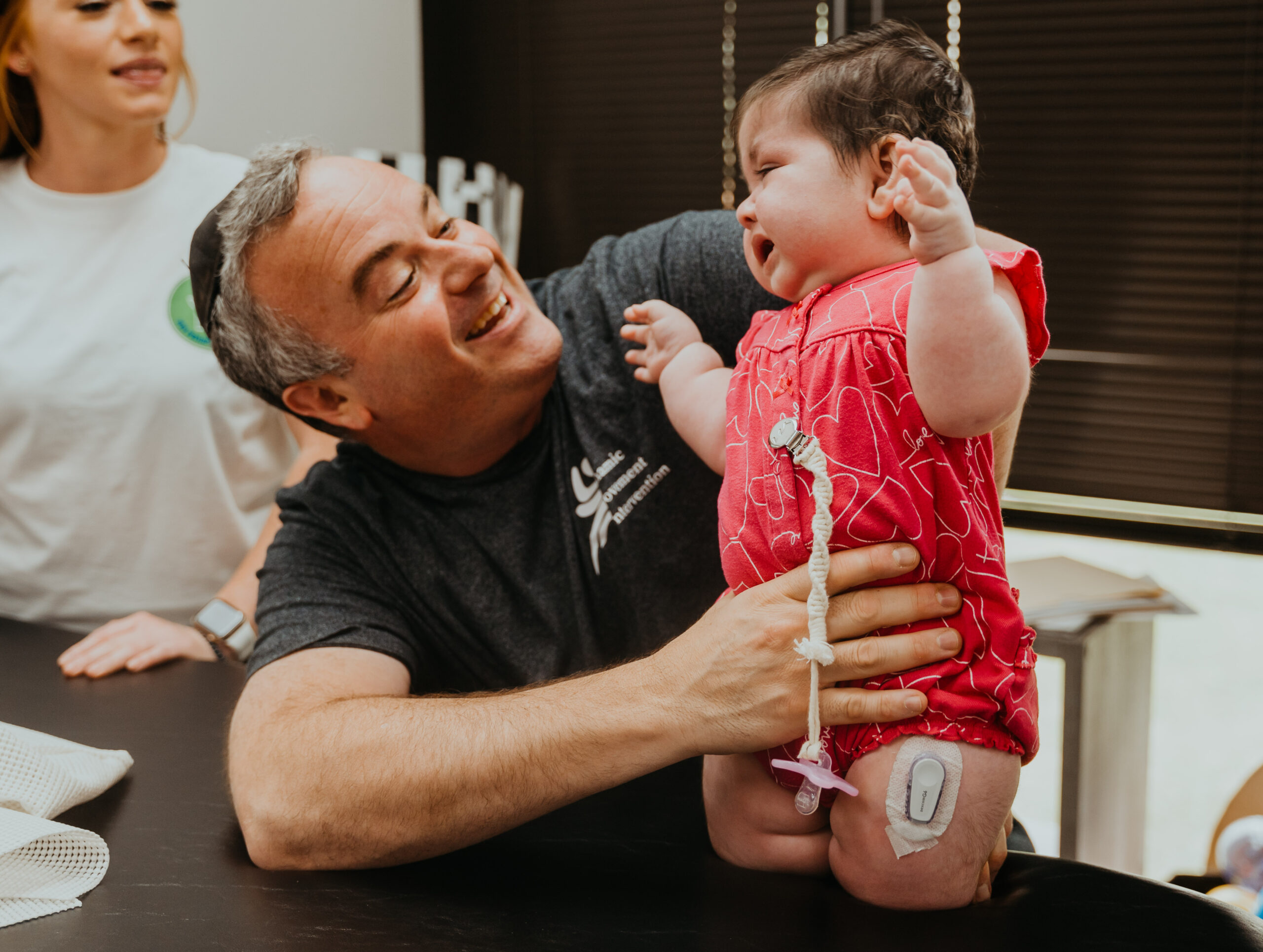
By Jake Kreindler, PT, DMI Co-Founder
In 2019, Professor Iona Novak of the Cerebral Palsy Alliance Research Institute and the University of Sydney published a paper entitled “State of the Evidence Traffic Lights 2019: Systematic Review of Interventions for Preventing and Treating Children with Cerebral Palsy”.1
This systematic review examined studies published between 2013 and 2019 to determine the available interventions for children with cerebral palsy and the categorized their effectiveness based on the ranking of the Evidence Alert Traffic Light Grading System which was developed by the Cerebral Palsy Alliance in 2012.
Interventions were then assigned to one of 4 categories:
Green Light (High) indicates an effective intervention- “Do It”
Strong Yellow Light indicates possible effectiveness- “Probably Do It”
Weak Yellow Light indicates no research exits or conflicting findings exist- “Probably Don’t Do It”
Red Light indicates high quality evidence indicates ineffectiveness- “Don’t Do It”
While the scope and breadth of this article was enormous, it was met with frustration from many therapists across several modalities and treatment approaches. It gives the impression that many treatment approaches are invalid simply because they do not have sufficient research backing their efficacy.
This applies to DMI as a “newer” modality.
It is imperative that we clarify what this article is and what it isn’t.
This article was not the opinion of Dr. Novak or any other single researcher. As a systematic review, this paper examined results from 182 different studies and reported and categorized their results within a framework.
Let’s now shift our focus to DMI. DMI utilizes and is congruent with 17 points within the Green Light categories and framework.
Motor:
Bimanual Hand Function (Green Light)
Environmental Enrichment (Green Light)
Home Program (Green Light)
Goal Directed Training (Green Light)
Strength Training (Green Light)
Mobility Training (Green Light)
Task Specific Training (Green Light)
Coaching (Yellow Light, W+)
Mobility Training (Yellow Light, W+)
Physical Activity (Yellow Light, W+)
General Stimulation (Yellow Light, W+)
Contracture/Alignment:
Strength Training (Yellow Light, W+)
Self Care:
Goal Directed Training (Green Light)
Early Intervention:
Motor Training (Yellow Light, W+)
Modalities Commonly Used During DMI Sessions:
Electric Stimulation (Yellow Light, W+)
Taping (Yellow Light, W+)
Whole Body Vibration (Yellow Light, W+)
DMI is a therapeutic technique designed to trigger neuroplasticity in the child’s brain by utilizing goal- oriented, task specific activities and exercises, making the child actively achieve gross motor function.
While DMI has not been studied, Dr. Novak clearly indicates what types of modalities and treatment approaches are most beneficial:
“We know that intensive task-specific motor practice is effective and works in a variety of treatment modalities…”
In addition, a cornerstone of DMI is to make the child an active participant in the therapy. The therapist introduces an exercise. The child is then expected to achieve that goal or task actively. We never passively guide a child through a movement. When a child is presented with a sensory cue, then actively achieves the task, the somatosensory systems can trigger neuroplastic changes. By doing so repeatedly, we can improve the mapping and neural infrastructure, and pragmatically improve a child’s level of participation in daily activities, function, and ultimately, their quality of life. This is also clearly delineated in the paper:
“When viewed through the lens of neuroplasticity, these results are logical. A passive experience of a movement, provided via a hands-on therapeutic approach from a carer or therapist, does not involve any child-initiated problem solving or any child activation of their motor circuity.”
Many clinicians were disheartened by the implication that if their preferred treatment approach was not a “Green Light” intervention, then the article deemed it as a bad or ineffective intervention.
The article clearly wrote about this as both a limitation of the scope of a systematic review as well as from a clinician’s view:
“Furthermore, it does not seek to criticize therapy choices of families or critique health care providers. Where evidence is not available, more well-designed trials are necessary.”
“Some families believe that certain therapeutic approaches work for their child, but this was not possible to address within this review; however, we do not dismiss their views.”
Families and therapists have seen tremendous gains using DMI and other treatment approaches.
Therefore, it may have been better to separate this Weak Yellow Light category further.
Modalities and treatment approaches that do not have sufficient evidence (DMI is in very good company in that regard) are typically so, not because they are not valid, but rather because of monumental barriers to conducting quality research. A better approach may have been to make that delineation as “None, or Insufficient Evidence” and another category, “Conflicting Findings.” In addition, instead of writing “Probably Don’t Do It”, the paper could have written, “Unable to Recommend Yet” or something similar.
While research is a huge focus in the world of pediatric therapy, it is imperative that we come back to the basics.
There are 3 pillars of evidenced based practice:
1. Best Available Evidence
2. Clinician’s Knowledge and Skills
3. Patient’s Wants and Needs
DMI has exploded on the scene of pediatric therapy. And for good reason. We help children learn, practice, and master the gross motor skills necessary for stability, mobility, transitions, and essentially, becoming independent in their environment and the world.
What is the status of DMI in the scope and framework of evidence based practice?
As of the writing of this article, there are no published works specifically addressing DMI’s efficacy as a treatment approach.
Does that mean it isn’t a valid approach?
Of course not!
We see how DMI fills criteria in multiple research works, including the Red Light, Green Light study. The components and intricacies of how DMI is practiced aligns well with what has been shown to work.
Our hope is that practitioners and researchers around the world will take an objective look at the work DMI does, study its methods, and demonstrate with empirical evidence and data that what we do is clinically effective.
What about Clinician’s Knowledge and Skills?
We hear daily from practitioners how DMI has revolutionized the way they treat and how the results they are witnessing from the children are significant and sometimes even “explosive”!
They report that they are more confident in their own handling, understand childhood gross motor development better and differently, have a better grasp of body mechanics, how to address primitive reflexes, and are able to elicit active responses from children in ways they have never seen before in their careers.
What about Patient Wants and Needs?
Our patients are children, some of whom cannot verbally express their wants and needs. Their parents communicate their wants and needs for us and are a huge part of the success of a child’s treatment regimen. Every parent wants their child to reach their gross motor potential. While within the scope of a child’s level of disability those goals may differ, DMI seeks to help each child reach their individual potential. Task specific goals are set and monitored. Those goals are addressed and treated in sessions as well as within an individually curated home exercise program. As the child progresses, so do their updated goals. While we celebrate each new milestone and achievement, we look towards a life of more independence.
And those non-verbal kids who seemingly can’t communicate? Spend a day working with a child, and you will see their faces light up with pride when they accomplish a task or complete an exercise. They know what they are capable of and are as proud as we are.
DMI has a solid footing in two of the three pillars of evidence based practice. We are doing our best to complete the trifecta, and won’t be satisfied until the efficacy of DMI is clearly supported by empirical data.
So what is the future of DMI and pediatric therapy in general?
We need to dispel the myths held by clinicians, researchers, and medical professionals that what pediatric therapists do on a daily basis to improve the lives of children with disabilities is ineffective or not worthwhile. Most importantly, we need to continue to create dialogue between the evidence based research community and the world of pediatric therapists to find common ground, bolster our professions, and eliminate barriers to research. Our children deserve that.
References
1. Novak, I., Morgan, C., Fahey, M., Finch-Edmondson, M., Galea, C., Hines, A., … & Badawi, N. (2020). State of the evidence traffic lights 2019: systematic review of interventions for preventing and treating children with cerebral palsy. Current neurology and neuroscience reports, 20, 1-21.
2. (n.d.). Guide to CP Interventions. CerebralPalsy.org. https://cerebralpalsy.org.au/wp-content/uploads/2023/06/GuidetoCPInterventionsPDF_.pdf
3. APTA (n.d.). Patient Care: Evidence Based Practice Resources. APTA.org. https://www.apta.org/patient-care/evidence-based-practice-resources/components-of-evidence-based-practice
4. DMI Therapy (n.d.). DMITherapy.com. https://dmitherapy.com/




